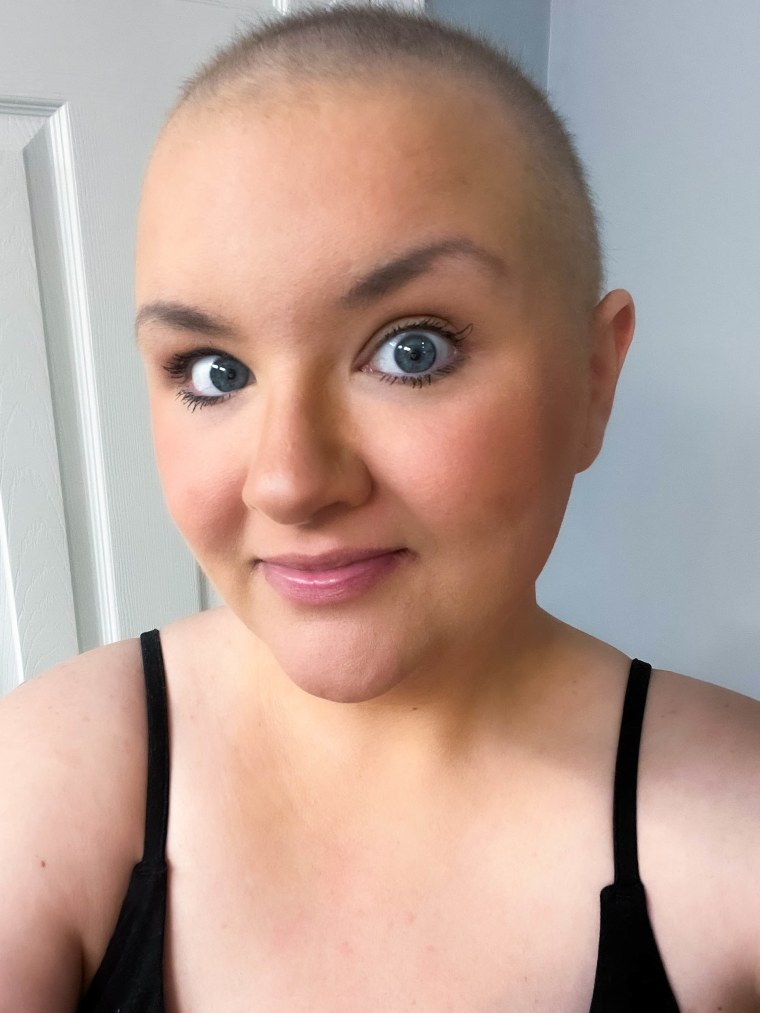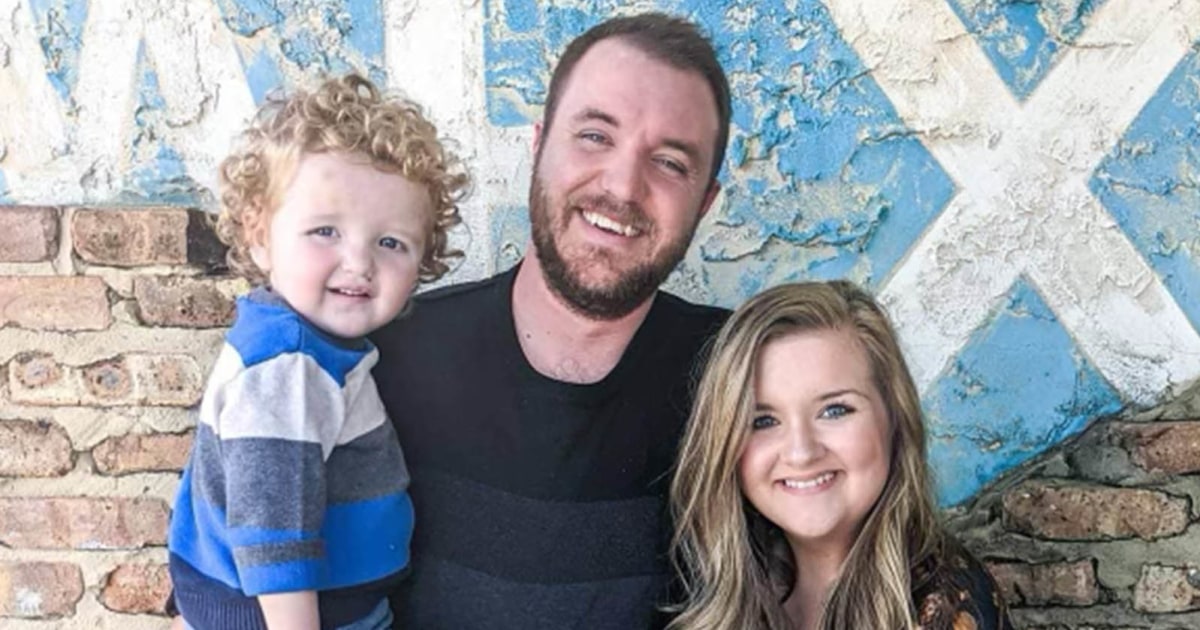When Nikki Myers found the lump in her neck last fall, she visited an urgent care clinic. Doctors suspected Myers had a chest infection that caused an inflamed lymph node and performed a CT scan. But the scan offered unclear results.
“They were confused because they were like, ‘Usually these areas on a CT scan would determine some sort of infection,’” Myers, 33, of Long Beach, Texas, tells TODAY.com. “They were like, ‘Here try this antibiotic, and then if it doesn’t get better, come back and we can do additional testing.’”
Over the next two weeks, the lump remained, and doctors sent her for more testing. Eventually, she learned what was wrong — she had Stage 4 ovarian cancer.
“The red flag was there. I hadn’t been sick prior. I had no previous colds,” she says. “Cancer was totally random in my eyes.”
A Lump Suddenly Appears
In September 2023, Myers gave birth to her third child via Cesarean section and appeared to be healthy then.
“During that time, I had multiple scans, ultrasounds and blood work and nothing was detected,” she recalls.
In the summer of 2024, she noticed that she had some bloating often around the time of her period, which she didn’t think was unusual.
“Bloating was not uncommon for me,” she says. “(I was) trying to lose some weight … the first place I would lose weight was my stomach (but) it didn’t go anywhere.”
In September, she noticed the lump and visited an urgent care facility. After, she took the medication as directed.
“On the last day of (taking) my antibiotic, I woke up and my shoulder felt a little stiff,” she says. “I was never in pain. I had always pressed on the lump. It never got bigger.”
Myers visited urgent care again because the lump remained, and doctors gave her another antibiotic and performed a chest X-ray. They noticed more masses.
“They started throwing around ‘an oncologist,’” she says. “They threw that word out there like, ‘Let’s send a referral to the oncologist.’”
They referred her to an otolaryngologist for a biopsy, and recommended she get a mammogram because the doctor felt something in her right armpit. The biopsy and bloodwork revealed that Myers had ovarian cancer that had spread to her neck, making it Stage 4 ovarian adenocarcinoma, which had spread throughout her lymphatic system.
“They knew that I had quite a lot of tumors,” she says. “It was quite far away from the origin, which was down below my pelvic region.”

She visited a gynecological oncologist in Dallas and learned about the next steps. She underwent a PET scan to determine “how invasive it was,” and started chemotherapy, which was four rounds of chemotherapy every three weeks.
“I’m getting blasted with chemo,” she says.
Genetic testing revealed that she was positive for BRCA1, a genetic mutation that increases one’s risk of breast and ovarian cancers, especially at an earlier age. Following chemotherapy, doctors performed another CT scan and more bloodwork to see if her tumor markers decreased. Then they performed surgery.
“They wanted to remove the bulk of (the cancer),” she says. “They did a total hysterectomy.”
Doctors removed her uterus, cervix, fallopian tubes and lymph nodes and “anything that looked questionable.”
Following surgery, she underwent three more rounds of chemotherapy and is now on a PARP inhibitor, a medication that treats cancers from genetic mutations, such as BRCA, that restricts DNA repair in cancer cells, says MD Anderson Cancer Center.
“I can take that up to two years in the hopes of not getting a recurrence,” she says.
Ovarian Cancer
Most ovarian cancers — about 85% to 90% — are carcinomas, the American Cancer Society notes. In 2025, about 20, 890 women will learn they have ovarian cancer with about 12, 730 dying from ovarian cancer, the organization says.
While it often occurs in women in their 60s or older, having a BRCA mutation increases the chances of developing ovarian cancer the National Cancer Institute says. About 39% to 58% with a BRCA1 mutation will be diagnosed with ovarian cancer and 13% to 29% of people with the BRCA2 mutation will develop it.

Diagnosing ovarian cancer can be difficult because it has few symptoms. If symptoms do occur, they can be confused with other conditions, past TODAY.com reporting says. Signs can include:
“A lot of the time there are no symptoms, and even when it’s Stage 3 or 4, symptoms are very vague,” Dr. Zaid Al-Wahab, a gynecological oncologist at Corewell Hospital in Royal Oak, Michigan told TODAY.com previously. “There’s always this perception that it happens in certain types of patients … it can happen in much younger women so more awareness of ovarian cancer (is needed).”
‘Terrifying’ and ‘Wonderful Moments’
As a mom of three children under 10, Myers feels grateful that her “wonderful support group” helped her navigate a cancer diagnosis and treatment.
“My entire family, the moment they found out I had cancer, flew in and drove in for me,” she says. “Helping whenever, especially with my children, and my kids have been wonderful through all of this.”
Myers’ identical twin sister is also BRCA1 positive, and doctors removed her fallopian tubes and uterus after a difficult delivery. Luckily, she had no signs of cancer at that time. For now, Myers’ condition is stable, and she’ll see her doctor every three months to make sure she remains healthy.
“I have been very fortunate to have a very positive reaction to everything,” she says. “I haven’t been in pain, except for obviously the pain chemo inflicted on me.”
She shares her story on TikTok so other young people with cancer don’t feel as alone and that has helped her navigate some of the challenges of having cancer.
“Cancer is scary. It’s all-consuming. But it doesn’t have to be that way,” Myers says. “There are terrifying moments and there are wonderful moments.”
